Autumn hadn’t yet surrendered to winter on the Knebelberg. Crisp morning air rolled down the slopes, brushing past pine needles and empty hiking signs. This rugged corner of the Mittelgebirge is a quiet place, perfect for walking, thinking, and testing cars that make a lot of promises. So when the 2024 Nio EL7 arrived, gliding silently off the trailer like a spaceship on loan from the future, it looked wildly out of place, and yet strangely appropriate.
This wasn’t just a drive; this was a deep dive into what might be the most ambitious electric SUV to come out of China yet. With 653 horsepower, luxury tech galore, and a price that makes BMW, Audi, and Mercedes flinch, the Nio EL7 came to prove something. But on these narrow forest roads and high-altitude switchbacks, only one question matters: how does it actually drive?
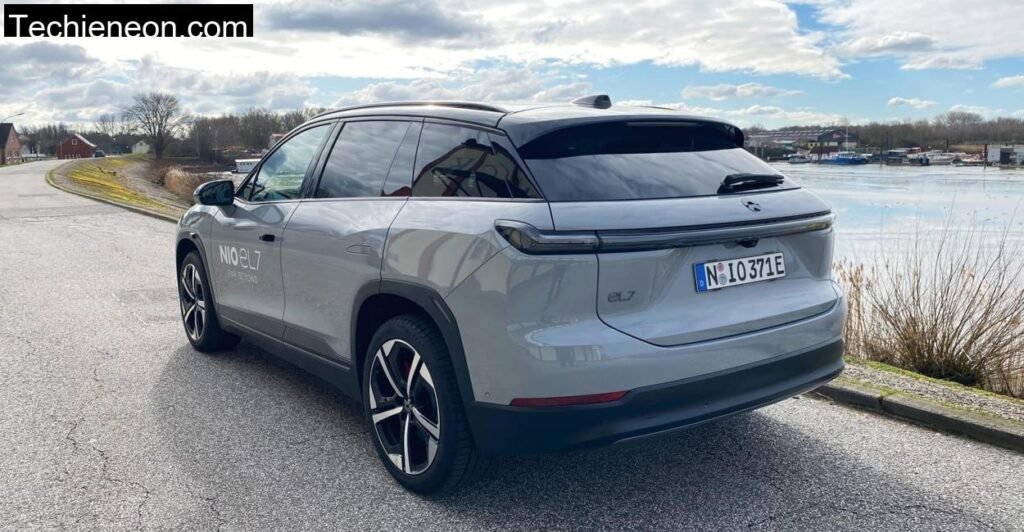
Common Technology Platform
The EL7 shares Nio’s high-end NT 2.0 platform with the ET7 sedan. Under the skin, it packs dual electric motors, one front, one rear, delivering 480 kW of total system power. This all-wheel drive setup is powered by either a 75 kWh or 100 kWh battery pack that lives flat in the underbody. The weight is substantial, but so is the tech: air suspension with adaptive damping, a hardware suite for autonomous driving, and OTA updates built in from the ground up. It’s modular, it’s scalable, and most importantly, it’s already working in multiple other models.
Electric Car Nio EL7: The Charm Offensive
Before I even sat in the driver’s seat, the EL7 was trying to seduce me. The door handles popped out like polished silver fingers. The door closed itself with the hush of a luxury hotel suite. And then it spoke.
A childlike voice greeted me as “Nomi,” the orb-shaped voice assistant mounted like a hood ornament in the center of the dash. Nomi blinked, grinned, and twitched like a Pixar character with a caffeine addiction. Charming? Absolutely. Creepy? Also yes.
The cabin felt like business class with extra legroom, wood trim, matte surfaces, stitched leather, and a massive vertical screen anchoring the cockpit. There’s no start button. The EL7 wakes up when you sit down. The future, apparently, doesn’t like redundancy.
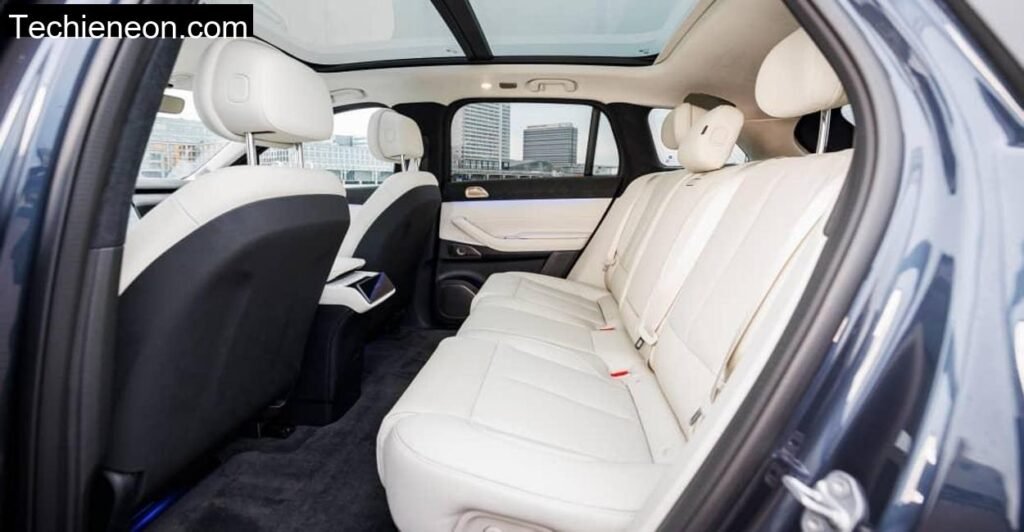
Electric SUV with 653 hp
Leaving the forest trail and merging onto an open road, I gently pressed the accelerator. Nothing dramatic. Just clean, silent propulsion. No whining motors, no gravel pinging the wheel wells. Foam insulation in the arches takes care of that.
But when I did stomp the pedal, flattening it into the mat on a sharp uphill stretch, I understood why Nio lists the 0–100 km/h time as 3.9 seconds. The EL7 doesn’t surge forward. It erupts. All 850 Nm of torque are on standby, ready to twist the air around you into a blur. Passengers lurch back into their plush headrests. Grown adults giggle like kids.
Yet, you never forget the weight. The EL7 tips the scales at 2,441 kg. It’s composed through fast sweepers and passed the ADAC lane change test, but the steering is distant and body roll makes itself known in tight corners. The air suspension smooths out road acne, but harsh bumps still get through, especially at low speeds, blame the 20-inch wheels.
Nomi: Annoying Voice Assistant
Let’s talk about Nomi again. She’s… persistent. Warns you if you’re speeding. Asks if you’re paying attention. Throws a digital tantrum if you ignore her. And yet, if you say “Hey Nomi, be quiet,” she nods and shuts up.
Nomi is cute until she’s not. Try entering an address manually with voice input and you’ll quickly regret not using the touchscreen. She’s expressive, though, over 200 facial animations, from sweating during acceleration to dancing to music. If she ever gains control of the climate system, we’re all doomed.
Assistants Sometimes Unreliable
The EL7 boasts a tech arsenal that reads like a spec sheet from a sci-fi film,33 sensors, lidar, radar, cameras, and more. Yet, it’s not quite ready for prime time.
During my test, adaptive cruise control braked for phantom obstacles. Traffic sign recognition misread speed limits. The steering assistant occasionally yanked the wheel when it wasn’t needed. It’s capable, yes. But trustworthy? Not always.
Range in the Ecotest: 420 Kilometers
Power like this comes at a price, and not just at the dealership. The EL7 devoured electrons on the Knebelberg. Driving aggressively (as one tends to when handed 653 hp), I saw real-world consumption climb above 24 kWh/100 km.
ADAC’s Ecotest recorded an average of 23.9 kWh/100 km including charging losses. This translates to a real-world range of about 420 km with the big 100 kWh battery. Respectable, but not groundbreaking. If you feather the pedal and avoid autobahns, you might get close to Nio’s claimed 501 km WLTP range. Just don’t count on it.
Price from 73,900 Euros – Plus Battery Rental
Now we get to the catch. The base price for the EL7 is €73,900,but that doesn’t include the battery. You can rent it monthly (€169 for 75 kWh, €289 for 100 kWh), or buy it outright (€12,000 and €21,000, respectively).
Opting for a car subscription instead? Expect to pay between €1,000 and €1,500 per month, which includes insurance, service, and other fees. And remember: if you buy the battery, you forfeit access to Nio’s battery swap stations, one of the car’s most forward-thinking features.
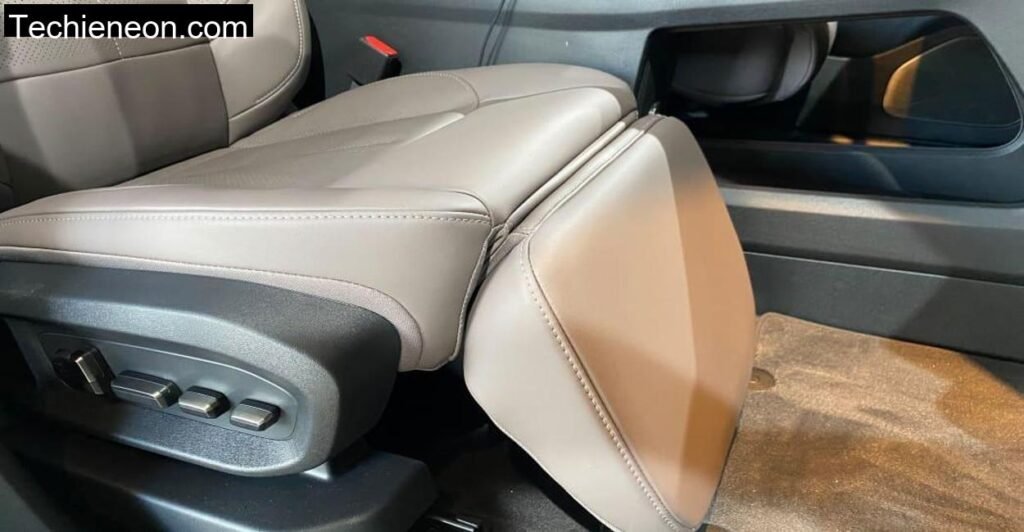
Technical Specification
Technical info is taken directly from Nio’s official website to ensure it’s correct.
| Specification | Value |
| Powertrain | Dual electric motors (AWD) |
| Total Power | 480 kW / 653 hp |
| Torque | 850 Nm |
| Acceleration (0–100 km/h) | 3.9 seconds |
| Top Speed | 200 km/h |
| Battery Capacity (Gross/Net) | 100 kWh / 90 kWh |
| Charging (DC max/avg) | 125 kW / 108 kW |
| Real-World Range (Ecotest) | 420 km |
| WLTP Range | 501 km |
| Consumption (WLTP) | 22.1 kWh/100 km |
| Trunk Volume (Standard/Max) | 570 l / 1,545 l |
| Towing Capacity (Braked) | 2,000 kg |
| Curb Weight | 2,441 kg |
| Price (Without Battery) | From €73,900 |
| Warranty | 5 years / 150,000 km |
Conclusion
The Nio EL7 is not perfect, but it’s also not just another Chinese EV trying to be a Tesla. It’s its own thing: bold, luxurious, fast, and unafraid to experiment. The powertrain is explosive, the design feels premium, and the feature set rivals the best of Europe.
But it’s heavy. It’s expensive. And its semi-autonomous features need fine-tuning. Nomi is both a delight and a digital diva. And the range, while decent, doesn’t set any records.
On the narrow ridges of the Knebelberg, the EL7 felt like a spaceship on Earth, impressive, disorienting, and not quite fully integrated with its surroundings. And maybe that’s the point. This isn’t a car built for compromise. It’s a statement. A challenge. And sometimes, that’s exactly what progress looks like.
Can you buy the Nio EL7 with the battery included?
Yes, though it’s optional. Buying the battery costs €12,000 for the 75 kWh or €21,000 for the 100 kWh pack.
How fast can the Nio EL7 charge?
At a fast-charging station, the EL7 reaches up to 125 kW. In testing, the average charging speed was 108 kW from 10 to 80 percent in 38 minutes.
What’s the benefit of the Nio EL7’s battery swap system?
Nio’s battery swap stations allow you to replace a drained battery with a full one in about five minutes, faster than any traditional charging method. However, this only works if you rent the battery.
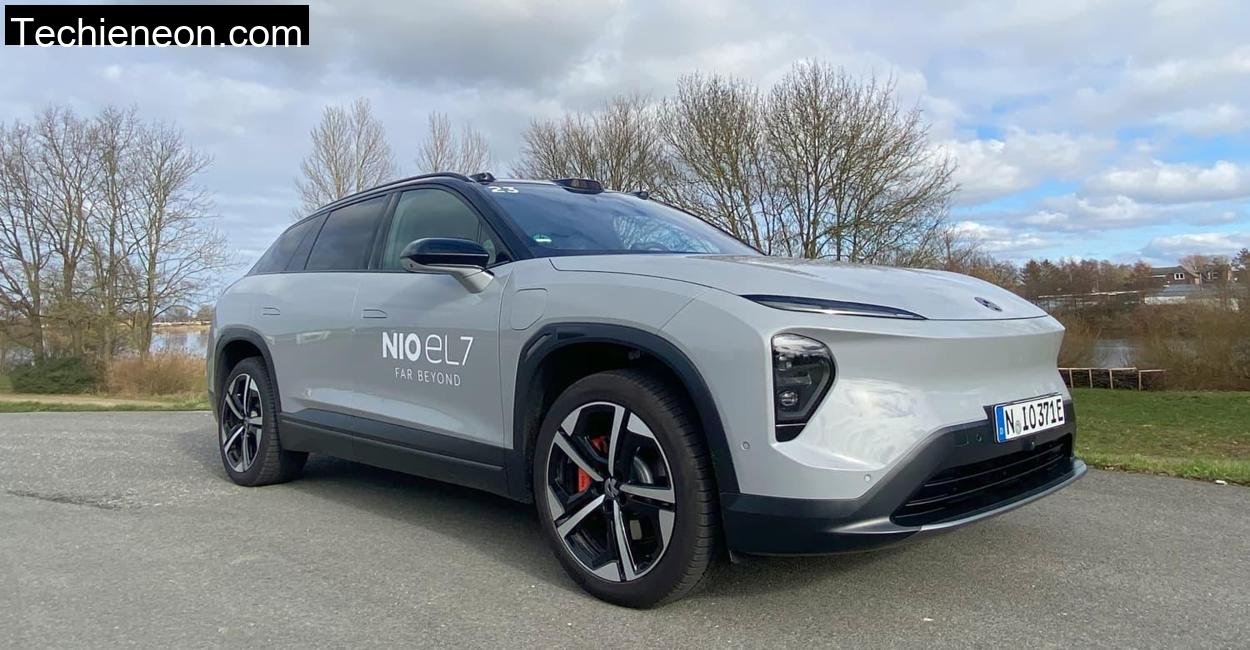
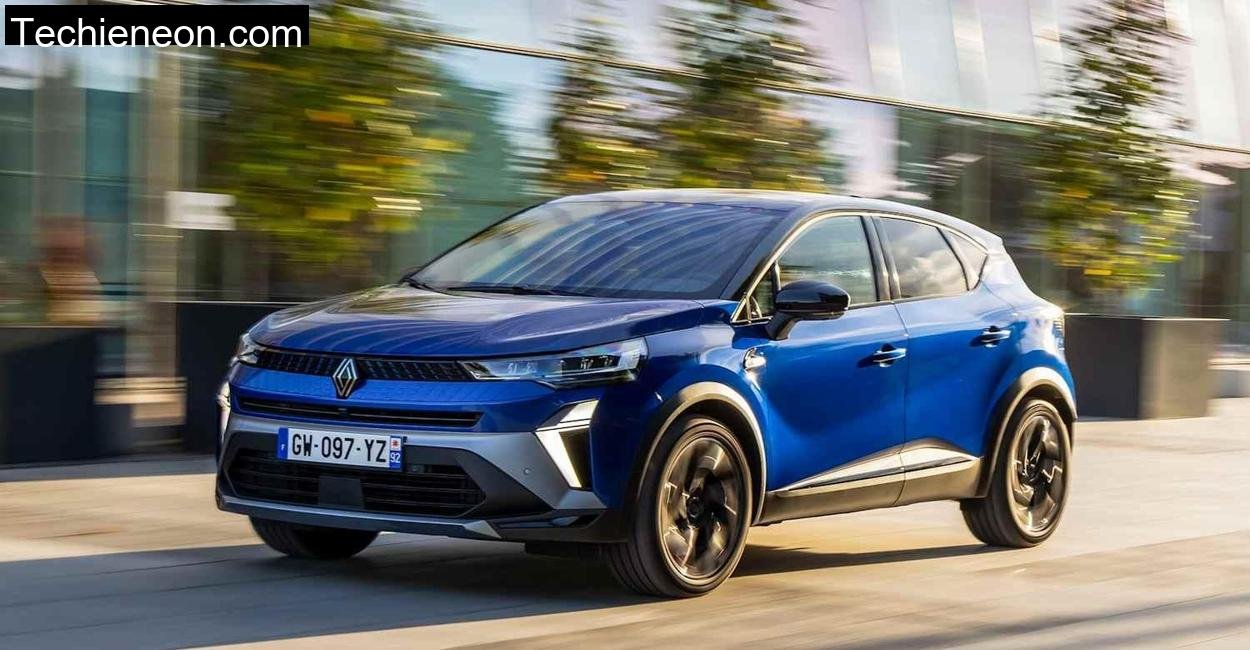

Leave a Comment